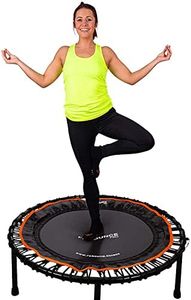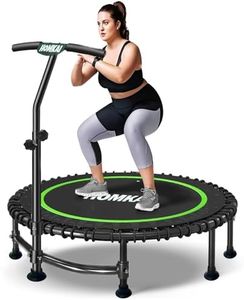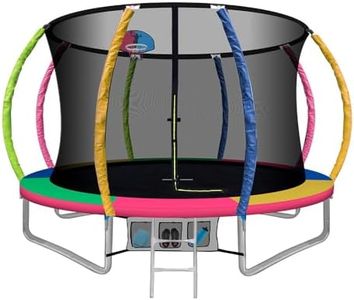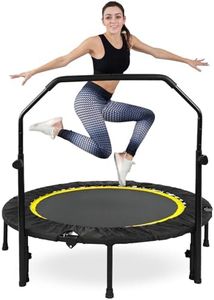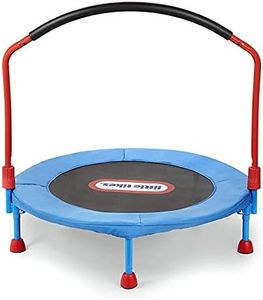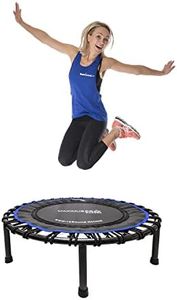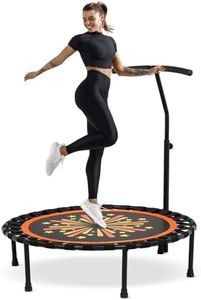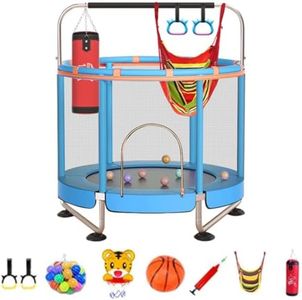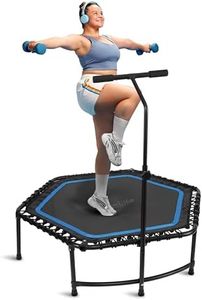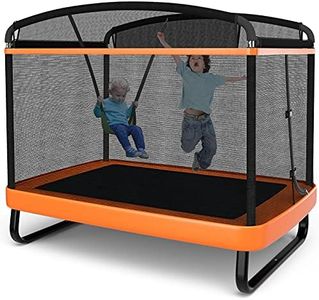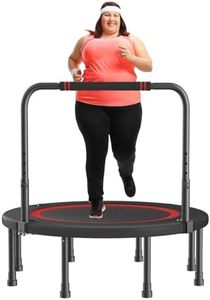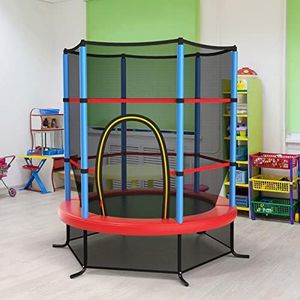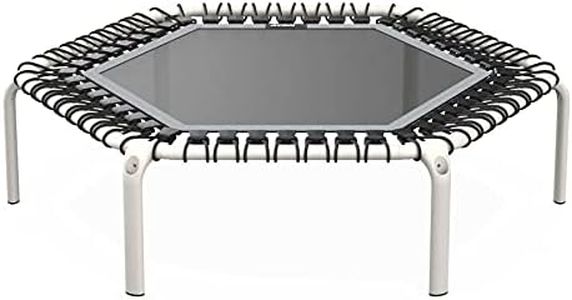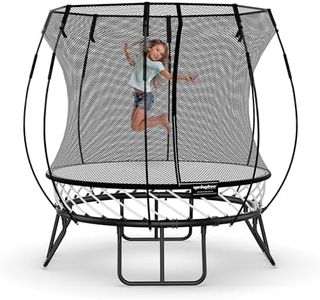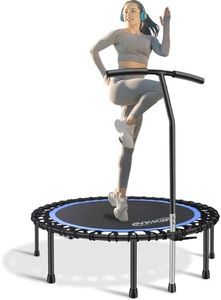We Use CookiesWe use cookies to enhance the security, performance,
functionality and for analytical and promotional activities. By continuing to browse this site you
are agreeing to our privacy policy
10 Best Indoor Trampolines
From leading brands and best sellers available on the web.By clicking on a link to a third party's website, log data is shared with that third party.
Buying Guide for the Best Indoor Trampolines
Choosing the right indoor trampoline can be a fun and rewarding experience, especially if you focus on what suits your available space, safety needs, and usage preferences. Start by thinking about who will use the trampoline (children, adults, or both), how much space you have indoors, and what you hope to achieve (fitness, fun, or therapy). Understanding the key features will help you narrow down your choices for a safe and enjoyable experience.SizeThe size of an indoor trampoline refers to its diameter or dimensions, and it's crucial because it affects both safety and usability. Smaller trampolines (usually 36-48 inches in diameter) are typically designed for younger children or for individual adult fitness, while medium (around 55-60 inches) and larger (up to 8 feet) ones can accommodate older children or more intense bouncing sessions. To decide, measure the space you plan to use the trampoline in, leaving extra room around it for safety. Pick a size that matches both your available area and your intended use—small for solo fitness or toddlers, larger for growing kids or games.
Weight LimitThe weight limit is the maximum recommended user weight the trampoline can safely support. This spec is important for safety and for ensuring the trampoline will last. Trampolines come with weight limits generally ranging from around 100 pounds for small models up to 250 pounds or more for larger or heavy-duty versions. Always choose a trampoline with a weight limit above the heaviest person who will use it. If multiple people will use it, consider the combined weight if they might jump together.
Safety FeaturesSafety features include things like enclosure nets, soft padded edges, handle bars, and non-slip feet. These features help prevent injuries from falls or hard landings. Some trampolines offer nets all the way around, some just have wide pads, and others add handles for balance. If children or beginners will use the trampoline, look for a safety enclosure and generous padding. For adult fitness trampolines, a sturdy handlebar can add stability.
Bounce QualityBounce quality is about how firm, responsive, or soft the trampoline feels when you jump. This is determined by the number and quality of springs or bands, as well as the mat material. A firmer, tighter bounce is often preferred for fitness and control, while a softer bounce is gentler for small children. Try to read reviews about the feel of the bounce, and choose according to whether you want high energy workouts or a gentler, fun experience.
Assembly and PortabilityAssembly and portability refer to how easy it is to put the trampoline together, take it apart, and move it between locations. Some indoor trampolines fold for easy storage, while others are fixed in place. Models that are lightweight and foldable are ideal if you need to save space or move the trampoline often. If you want it to stay in one place, assembly difficulty might be less of a concern, but always follow the instructions for safety.
DurabilityDurability is about how well the trampoline holds up over time, especially with frequent use. This depends on the frame material (usually steel for strength), the mat stitching, and the spring or band construction. Heavier, well-constructed trampolines typically last longer and feel more stable. If you expect heavy use, opt for trampolines with solid frame construction and premium materials.
